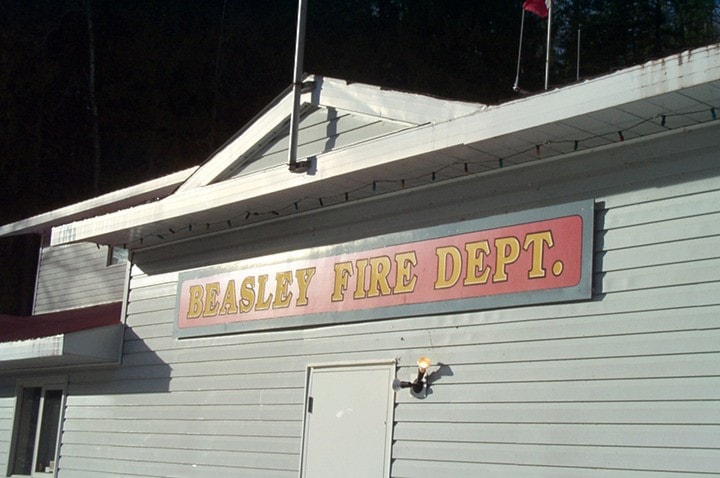Twelfth in an alphabetical series on West Kootenay-Boundary place names
Beasley, the Kootenay River community between Taghum and Bonnington, is named for Harry Exeter Beasley (1863-1943), in the 1890s the superintendent of the CPR’s Kootenay branches, and by 1904 the company’s Vancouver superintendent.
When the infamous Bill Miner robbed a train at Mission in 1904, Beasley was part of the investigation and manhunt. His 6,000 square foot mansion in Victoria, designed by Samuel Maclure and built in 1912, still stands.
The earliest appearance of Beasley as a place name was in the Nelson Tribune of November 14, 1900, which described the location of a mining claim as “opposite Beasley Siding.”
It was still called Beasley Siding or Beasley’s Siding through 1908, but appeared in its abridged form the following year in the Minister of Mines report: “In the immediate vicinity of Nelson, the Queen Victoria mine, at Beasley, has been the center of great interest.”
Beaver Falls
According to the Nelson Daily News of January 28, 1939, the Consolidating Mining and Smelting Co. established Beaver Falls southwest of Fruitvale in 1938 as a community for its employees.
Writing in Beaver Valley & Pend d’Oreille, Margaret Wood credited Boyd C. Affleck, who built the first house there some years earlier, with choosing the name.

Anna Reeves added in Tracks of the Beaver Valley & Pend’Oreille: “The name Beaver was first applied to this area because of the large population of beavers found in the district when the first people came through. Long-time residents can remember beavers building dams to such an extent that they caused the creek to overflow and flood the road.”
The Beaver Falls post office opened on May 2, 1949 but moved to the recently-established community of Montrose on October 30, 1953. (A rare Beaver Falls postmark sold last year for over $100.)
The falls themselves are 56 feet (17 meters) high and have a train bridge running over them. Periodically passenger trains have been offered to the falls on special occasions.
Belleview
Belleview, also spelled Bellevue, was on the top end of a narrows on the west side of the Columbia River between the upper end of Lower Arrow Lake and lower end of Upper Arrow Lake.
Clark Marshall explained that Belleview was “about three quarters of a mile” north of the old Burton townsite, on the opposite side of the river.
Kate Johnson in Pioneer Days of Nakusp & Arrow Lakes claimed the community got its name in the early 1920s when a school opened there.
However, an earlier reference can be found in the Trail Creek News of June 8, 1912: “All along the riverfront from Belleview to West Demars the same sign of prosperity exists …”
Belleview was lost in the flooding of the Arrow Lakes.
James Teit recorded a Sinixt name for this place, snexai’tsEtsEm, but provided no translation.
Next week: Backtracking to Beaton
Previous installments in this series
